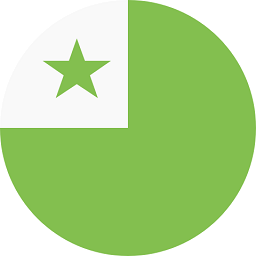Step 10 : Simple sentences in Esperanto
You've already learned so much in steps 1 to 9 and we'd like to help you learn even more with this bonus step. Learn the phrases Ĉi tio estas libro, Ĉi tio estas seĝo and Ĉi tio estas pordo (This is a book, This is a chair, This is a door). Then learn the phrases La pordo estas granda and La pordo estas malgranda (The door is big, The door is small). And then learn the phrases La pordoj estas grandaj and La pordoj estas malgrandaj (The doors are big, The doors are small). You can scroll to the top of this page to see a short lesson about simple Esperanto sentences including useful examples. Take everything you have learned so far and then teach yourself just a few new words each week. In this way, you'll soon be able to say 100's, if not 1000's of short phrases in Esperanto. Give it a try yourself!






